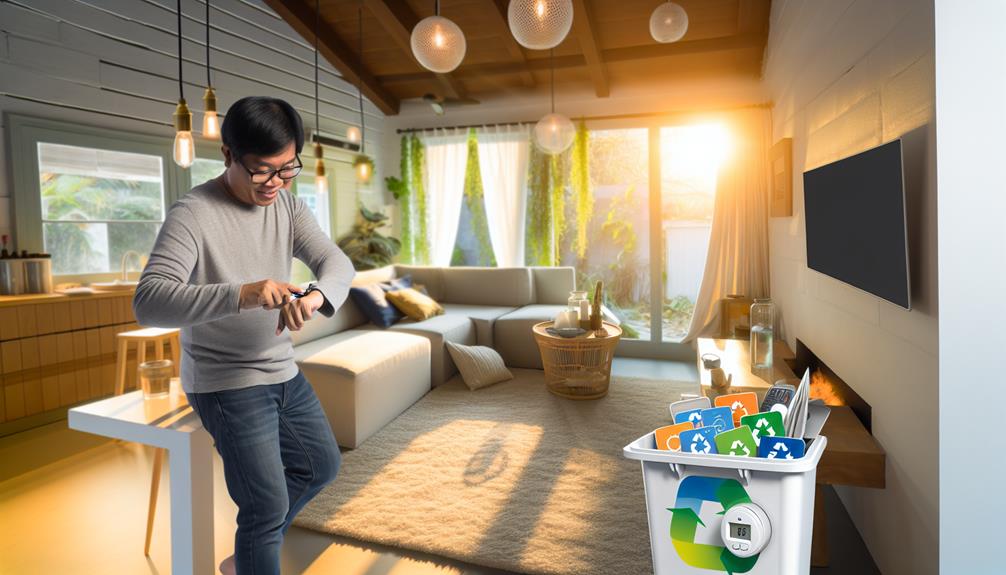When it comes to energy consumption, think of your daily habits as small ripples in a vast sea – together, they can create a powerful wave of change. By making simple adjustments in your routine, you have the ability to not only decrease your energy usage but also contribute to a more sustainable future.
Whether it's adjusting your thermostat or upgrading to energy-efficient appliances, the road to energy conservation is filled with easy yet impactful choices. Let's delve into how these small actions can lead to significant results and a more eco-friendly tomorrow.
Efficient Lighting Choices
When it comes to cutting back on your energy usage, choosing energy-efficient lighting like LED bulbs is a practical and budget-friendly move. LED bulbs consume 90% less energy than traditional ones, making them a solid option for reducing your electricity costs.
Look for the Energy Star label on lighting products to ensure they're energy-efficient and will save you money in the long run. By investing in these efficient bulbs, you not only lower your energy consumption but also cut down on the need for frequent replacements, leading to overall savings. LED bulbs are built to last longer than traditional bulbs, making them a wise choice for your finances and the planet.
Switching to LED bulbs can significantly trim your energy usage, resulting in substantial savings on your electricity bills over time. Starting with your lighting choices sets the stage for a more energy-efficient and cost-effective lifestyle.
Smart Power Management Strategies
When it comes to managing your power consumption efficiently, it's crucial to look into automated energy scheduling and optimizing device power. These smart strategies can help you cut down on utility costs and lessen your environmental footprint.
Automated Energy Scheduling
Automated energy scheduling is like having a personal energy manager that helps you save money and reduce your carbon footprint. By using smart strategies to schedule when your devices use electricity, you can make the most out of peak and off-peak hours.
Here are some practical tips to get started:
- Smart Power Strips are your best friend: These nifty gadgets can cut down on sneaky energy drains, potentially slashing your yearly electricity bill by up to $100.
- Remember to unplug: It's a simple habit, but unplugging electronics when you're not using them can shave off 10% to 15% of standby energy consumption, leading to noticeable savings.
- Power Strips for the win: Make it easy on yourself by using power strips to shut down multiple devices at once, preventing energy waste.
- Get savvy with smart power management: By embracing smart strategies, you can fine-tune your energy usage for a more sustainable and efficient approach.
Taking control of your energy usage not only saves you money but also contributes to a greener planet. So, why not give automated energy scheduling a try and see the difference it can make in your daily life?
Device Power Optimization
Want to save some serious cash on your electricity bills? Let's talk about a simple trick that can make a big difference. You know that standby mode your devices go into when you're not using them? Well, that little mode can eat up a lot of power without you even realizing it, costing you around $100 a year on average.
So, here's the deal: investing in smart power strips can help you cut down on this sneaky energy drain. These nifty strips can completely shut off the power to your devices, stopping them from guzzling electricity when you're not around.
Another easy win? Unplug chargers, gadgets, and appliances when you're not using them. It might seem like a small thing, but it adds up to big savings over time.
Optimal Thermostat Settings
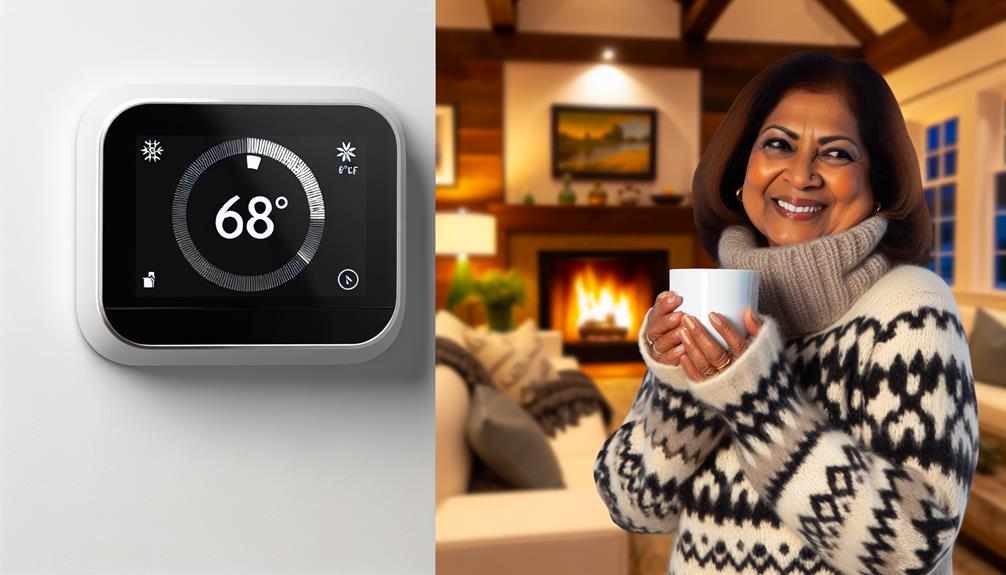
When it gets chilly outside, finding the right temperature for your home can be a balancing act between comfort and cost. A good starting point is setting your thermostat to 68°F during the winter months. This temperature strikes a balance between staying cozy and saving on heating expenses.
To optimize your savings, consider adjusting the temperature when you're out of the house or tucked in bed. By raising the temperature by 7-10 degrees when you're away and lowering it by the same amount at night, you can see significant reductions in your heating bill. Each degree you dial down on the thermostat can lead to energy savings of around 1-3%, so these adjustments can add up over time.
For even more efficiency, think about using programmable thermostats. These nifty gadgets can automatically tweak the temperature based on your schedule, ensuring you're not overheating an empty house or wasting energy while you're sleeping.
Efficient Temperature Management
To keep your energy usage in check and trim those utility bills, it's crucial to dial in your thermostat settings according to the seasons. Here are some practical pointers to help you manage your thermostat smartly:
- During the summer, aim for a cool 78 degrees or higher to keep those AC costs down.
- When winter rolls around, cozy up to 68 degrees or lower for efficient heating.
- Make the most of programmable features on your thermostat to tailor temperatures to your daily routine and save on energy.
- Every degree you adjust your thermostat can shave off up to 2% from your energy expenses.
Programmable Thermostat Benefits
If you want to amp up your energy savings and have better control over your home's temperature, using a programmable thermostat is a game-changer. Trust me, setting the thermostat to 78 degrees or higher during the summer can slash your cooling costs by up to 10%. And get this – for every degree you dial back the thermostat, you can save around 1% on your energy bill. These smart thermostats do the work for you by adjusting temperatures based on your routine, making your home super energy-efficient.
When winter rolls around, experts suggest lowering the thermostat to save on heating expenses while still staying cozy. By tweaking your thermostat settings with a programmable one, you could pocket up to $180 a year in energy savings. It's like a secret weapon for cutting costs and being eco-friendly at the same time. Trust me, it's worth the investment!
Energy-Saving Appliance Selection
When you're on the hunt for energy-saving appliances, go for Energy Star models to slash your energy usage and cut down on those pesky utility bills. These bad boys use 10-50% less energy than regular models, which means big savings for you.
Here are some pointers to help you pick out energy-efficient appliances:
- Check for Energy Star Labels: Energy Star appliances are like the gold standard for energy efficiency, so look out for that label to know you're getting a top-notch product.
- Opt for Front-Loading Washing Machines: Front-loading washing machines are champs at conserving water and energy, using 40% less water and 50% less energy than their top-loading counterparts. That's money saved on your water and electricity bills right there.
- Upgrade to Energy-Efficient Refrigerators: Say goodbye to those energy-guzzling old fridges and hello to energy-efficient ones that can trim down your energy costs by up to 9%. It's a win-win for your wallet and the environment.
- Do the Math on Potential Savings: By choosing energy-efficient appliances, you could be pocketing up to $500 a year in savings on your utility bills. That's a smart move for your home and Mother Earth.
Water Heating Efficiency Tips
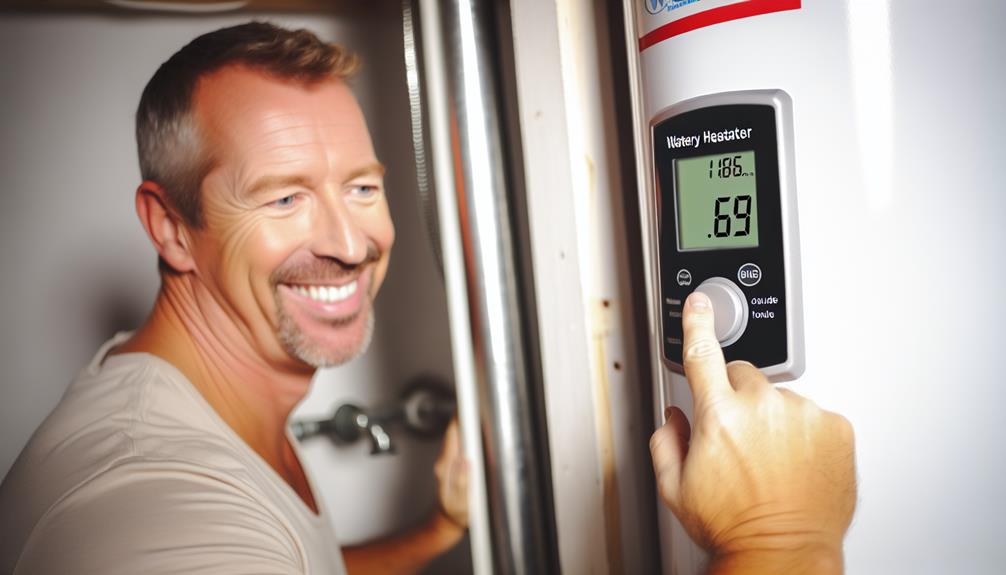
Looking to save money on your energy bills? Here are some practical tips to boost your water heating efficiency and cut down on costs. First off, try lowering your water heater temperature to 120°F – this simple adjustment can trim your water heating expenses by 3-5%.
Another smart move is insulating your hot water pipes to prevent heat loss, potentially saving you 4-9% on heating costs.
If you're ready to make a bigger change, consider switching to a tankless water heater; they can slash your energy expenses by 24-34% compared to traditional tank heaters.
For even bigger savings, think about installing a heat pump water heater – you could pocket around $330-$400 less on your energy bills annually.
And don't forget the little things – like taking shorter showers or installing a low-flow showerhead – they can cut your hot water usage by 25-60%.
Window and Door Insulation Techniques
Want to make your home more energy-efficient? Let's talk about how you can save money and reduce energy loss by improving the insulation of your windows and doors. It's a simple way to cut down on your utility bills and make your living space more comfortable.
Start by sealing up any gaps around your windows and doors with weather stripping and caulking. This easy step can keep cold air out and warm air in, making your home cozier and more efficient.
Consider upgrading to double-pane windows. They can save you up to $465 a year on heating and cooling costs by providing better insulation than single-pane windows.
For even more energy savings, think about installing storm windows. They can reduce heat loss by 25-50% during the colder months, helping you stay warm without cranking up the thermostat.
Don't forget to insulate the window frames and use thermal curtains to further enhance your home's energy efficiency. These simple adjustments can make a big difference in how much energy your home consumes.
HVAC System Upgrades
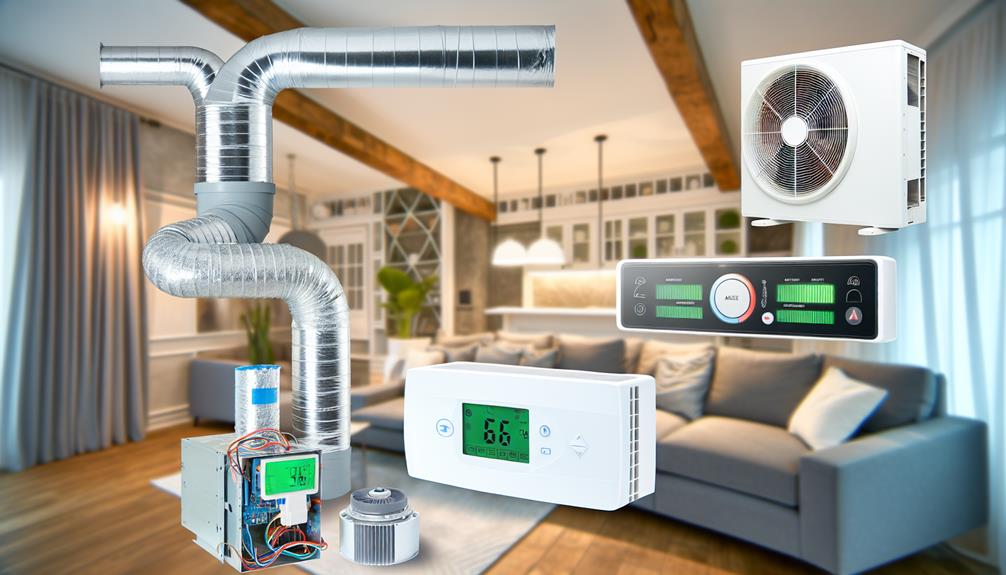
Thinking about upgrading your HVAC system? It could mean big savings on your energy bills and a more efficient home. When you opt for energy-efficient upgrades like an Energy Star HVAC system, you could save up to about $140 each year on energy costs. And if you add programmable thermostats to the mix, you might see a reduction of around 8% in your heating and cooling bills.
To get the most out of your HVAC system in terms of energy efficiency, it's crucial to pick equipment that suits your local climate. Regular maintenance is key to keeping your system running smoothly. Simple tasks like cleaning or changing air filters not only boost efficiency but also extend the lifespan of your system.
Investing in energy-efficient HVAC upgrades not only cuts down on energy usage but can also bring down your overall utility bills. By making these upgrades and sticking to a maintenance routine, you can create a cozier home environment while being mindful of your energy consumption and costs.
Home Weatherization Methods
When you're getting your home ready for different weather conditions, start by plugging up any drafts around windows, doors, and vents to keep energy use in check and make your place cozier. Taking the time to weatherize your home can really help cut down on energy costs and create a more pleasant indoor atmosphere.
Here are some practical tips to get your home weatherized and save some cash:
- Insulation: Check that your home is well-insulated in the attic, walls, and floors to keep heat where it belongs and potentially save around 30% on your energy bills.
- Weather Strips: Use weather stripping to seal off any gaps or cracks in doors and windows, which stops air leaks and boosts energy efficiency.
- Window Upgrades: Think about switching to Energy Star windows with double-pane glass to reduce heat loss or gain, improving your home's energy efficiency.
- Sealing Leaks: Block any air leaks around windows, doors, and vents to stop energy from escaping and improve your home's insulation.
Effective Home Insulation Practices
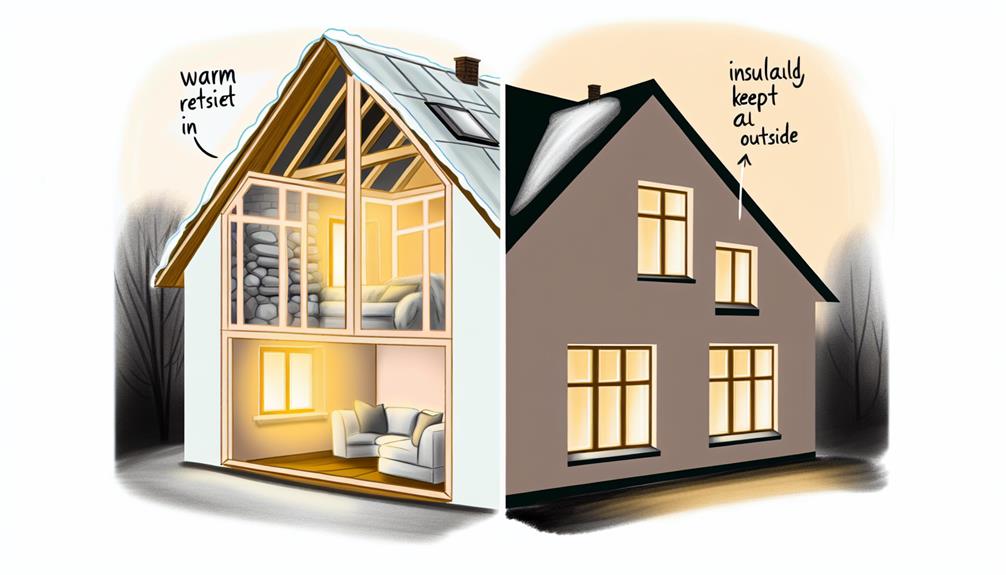
Want to make your home more cozy and energy-efficient? Here are some simple tips to help you out.
First off, check your windows to ensure they're well-insulated.
Next, seal up any gaps around your doors to keep the heat in and the cold out.
Finally, think about adding some extra insulation to your attic to prevent heat from escaping.
These little changes can make a big difference in your energy bills and keep your home at a comfortable temperature year-round.
Insulate Windows Properly
When it comes to making your home more energy-efficient, insulating your windows is a game-changer. Here are some practical tips to help you cut down on energy costs and boost your home's insulation:
- Switch to insulated windows to slash your heating and cooling expenses.
- Seal up any gaps around your windows with weather stripping to keep the air inside and improve energy efficiency.
- Consider upgrading to double-pane windows with low-emissivity coatings for superior insulation and reduced energy usage.
- Invest in energy-efficient windows to potentially save up to $500 per year on energy bills for an average household.
Seal Doors for Efficiency
When it comes to keeping your home cozy and saving on energy bills, sealing your doors is a game-changer. By making sure your doors are properly sealed, you can stop cold drafts and heat leaks, slashing your heating and cooling costs by up to 10%.
Adding weatherstripping around your doors can amp up your savings even more, cutting energy loss by a whopping 20%. Don't underestimate the power of foam strips or door sweeps to keep your home snug and comfy. Well-sealed doors not only maintain a steady indoor temperature but also keep chilly air from sneaking in.
Investing in quality door seals and thresholds is a smart move to up your home's energy efficiency and trim those pesky energy bills.
Use Attic Insulation
Looking to boost your home's energy efficiency? Consider upgrading your attic insulation—it's a game-changer! A well-insulated attic can slash your heating and cooling expenses by up to 20%. Here's why beefing up your attic insulation is key for keeping your energy usage in check:
- Say goodbye to losing heat in winter and gaining it in summer with solid attic insulation.
- By ramping up your attic's insulation, you'll cozy up your living space, all while trimming those pesky energy bills.
- Enjoy steady indoor temperatures year-round thanks to proper insulation up top.
- Adding insulation to your attic won't break the bank and is a smart move to amp up your home's energy efficiency.
Ready to make your home more energy-efficient? Elevate your attic insulation game—it's a surefire way to save money and stay comfortable all year long!
Energy Audit Importance
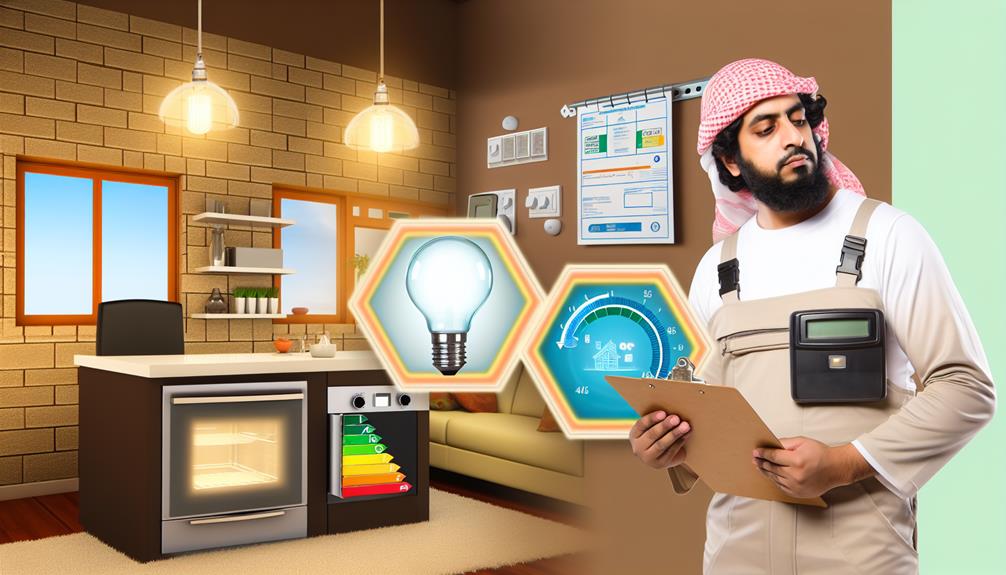
If you're looking to boost your home's energy efficiency and cut down on those pesky utility bills, a thorough energy audit is the way to go. These audits are like a detective mission for your energy use, helping you save anywhere from 5-30% on your monthly bills by making your home more energy-efficient.
When you get an energy audit, the experts will check out key spots like windows, insulation, and your HVAC system to pinpoint areas where upgrades can make a big difference in how your home uses energy. It's like giving your home a personalized energy makeover, tailored to make it run smoother and save you some cash in the process.
Solar Power Integration Benefits
Thinking about making your home more energy-efficient and cutting down on those hefty electricity bills? Well, diving into the world of solar power could be your next smart move. By tapping into the sun's energy, solar panels can significantly slash your energy costs over time. Not only will you save money in the long haul, but your property value will also get a boost, and you'll rely less on traditional grid electricity.
The beauty of solar power systems lies in their durability, lasting a solid 25-30 years, ensuring a sustainable energy source for decades. Plus, by going solar, you're doing your part for the environment, shrinking your carbon footprint and helping create a greener planet. And here's the cherry on top – there are government perks like incentives and tax credits that make solar installations a pocket-friendly choice for homeowners keen on savings and eco-friendliness.
Behavioral Adjustments for Energy Conservation
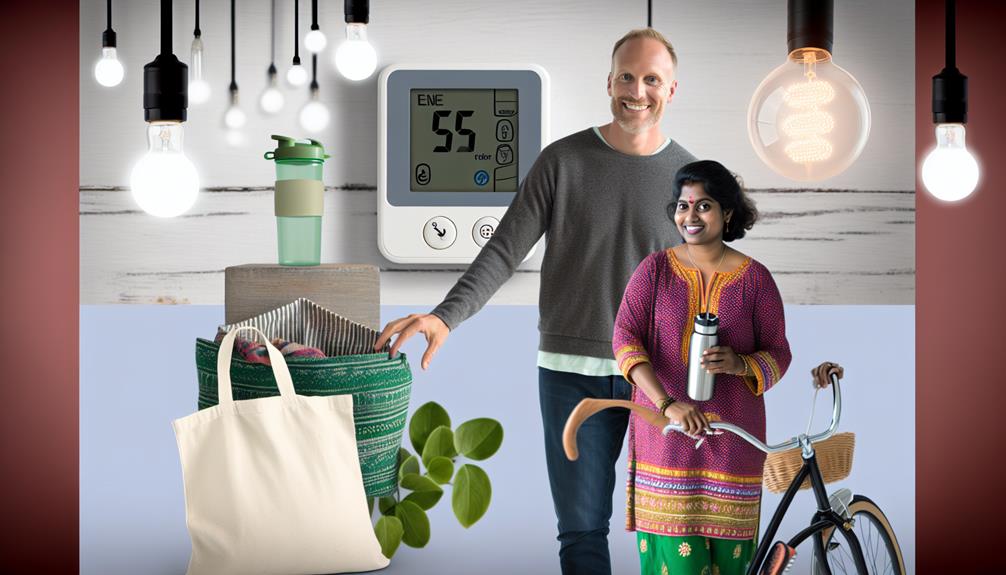
Curious about how you can tweak your habits to save energy and cut down on electricity costs? It's easier than you think!
Start by flipping the switch off when you leave a room – this simple move can pocket you about $100 a year.
Another trick is to unplug gadgets when you're not using them to dodge sneaky energy drains and reduce your power bill even more.
Adjusting your thermostat a tad lower in winter and a bit higher in summer can slash your heating and cooling expenses by around 10%.
Want to give your AC a break? Crack open a window for some natural breeze instead of always relying on it.
And when it's time to upgrade your appliances, go for energy-efficient models – they can chop off up to 30% of your electricity usage compared to older ones.
Frequently Asked Questions
What Are Some Simple Ways That People Can Reduce Energy Consumption?
Want to save on your energy bills? Here are some practical tips that can make a real difference:
Switching to LED bulbs can slash your energy usage by up to 90%.
Keeping your thermostat at 78°F can lower cooling costs by 6-8% per degree.
Unplug electronics when not in use to save around 10% on your energy bill.
Washing your clothes in cold water can reduce energy consumption by 75-90%.
Investing in Energy Star appliances can save you up to 30% on energy costs.
What Are 7 Ways to Reduce Energy Consumption?
If you want to cut down on your energy usage, here are some simple tips: Remember to switch off lights when you're not using them, unplug chargers that aren't in use, upgrade to energy-efficient appliances, seal up any drafts around windows and doors, insulate your windows, and adjust your water heater to 120°F. These small changes not only save you money but also help protect the environment.
What Are Five 5 Easy Steps You Can Take to Start Saving Energy?
If you want to start saving energy, here are some easy tips to follow: remember to switch off lights when you're not using them, unplug electronics that are on standby, adjust your thermostat wisely, choose energy-efficient appliances, and make sure to seal any air leaks you find. These simple steps can help you lower your energy usage and save money on your bills. It's all about being mindful of your energy consumption and making small changes that add up over time.
What Steps Do You Suggest to Reduce Energy Consumption?
Looking to save on your energy bill? Here's a few tips that have been game-changers for me. Swap out those old bulbs for energy-efficient LEDs, upgrade to Energy Star appliances, grab a programmable thermostat, seal up any pesky air leaks, and maybe even look into solar panels for some renewable juice. These moves not only slash your costs but also lighten your environmental footprint. Trust me, it's worth it!
